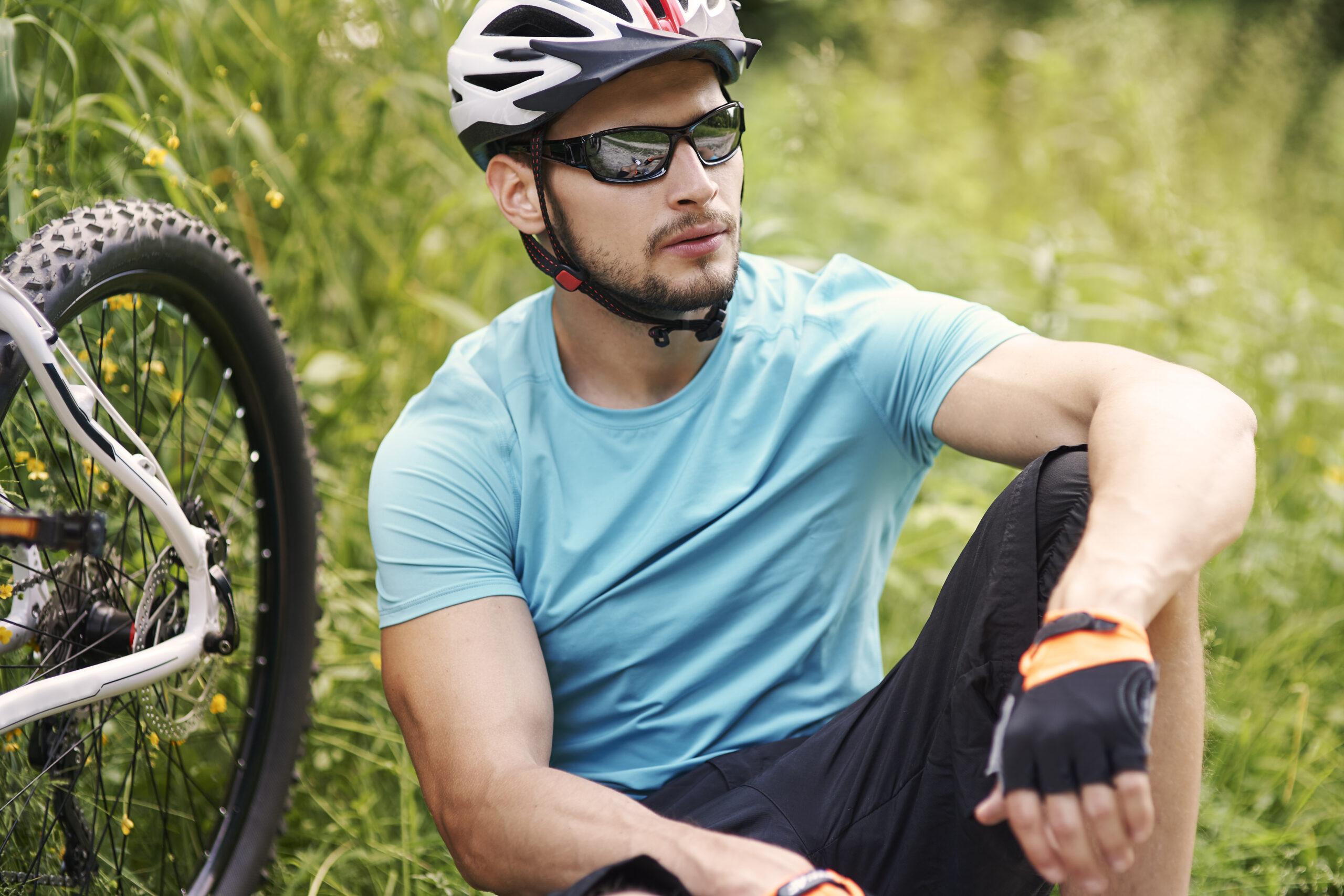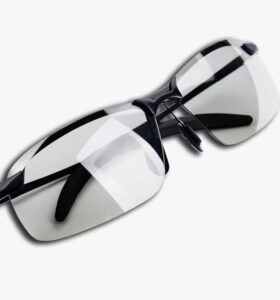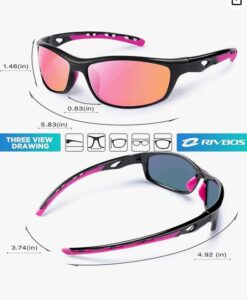Photochromic vs Polarized Cycling Sunglasses
As someone who cycles nearly every day, I’ve gone through plenty of sunglasses trying to find the perfect pair.
Whether I’m riding during sunrise, in bright mid-day sun, or through shaded forest paths, visibility and eye comfort matter more than I once realized.
That’s when I learned the difference between photochromic and polarized cycling sunglasses. Both protect your eyes, but they serve very different purposes.
I’ve used both on long-distance rides and city commutes. Each type helped in its own way. If you’re unsure what suits your riding style, here’s what I found after putting them to the test.
When choosing cycling sunglasses, you might wonder whether photochromic or polarized lenses are better. Both have unique benefits, but they serve different purposes. I have used both types extensively, and here’s what I’ve learned to help you decide.
What is the difference between photochromic and polarized cycling sunglasses?
Polarized Cycling Sunglasses
Polarized lenses reduce glare from reflective surfaces like water, wet roads, or car windows. They enhance clarity and reduce eye strain but have a fixed tint, meaning they don’t adjust to light changes.
My Experience:
I wore polarized sunglasses on a coastal ride with intense sunlight reflecting off the water. The glare reduction was impressive, but when I entered shaded areas, the lenses stayed dark, making it harder to see.
Best For:
-
Bright, consistent light conditions
-
Riders dealing with heavy glare
-
Cyclists who prioritize visual clarity over adaptability
Key Differences
-
Light Adaptation: Photochromic lenses adjust; polarized lenses do not.
-
Glare Reduction: Polarized lenses excel at cutting glare; photochromic lenses offer moderate glare protection.
-
Versatility: Photochromic lenses work in changing light, while polarized lenses are best for steady brightness.
Which Should You Choose?
-
If you ride in mixed light, go photochromic.
-
If glare is your biggest issue, choose polarized.
I’ve found that having both types is useful depending on the ride. What’s your experience? Have you tried either? Let’s discuss in the comments I’d love to hear your thoughts!
Pros 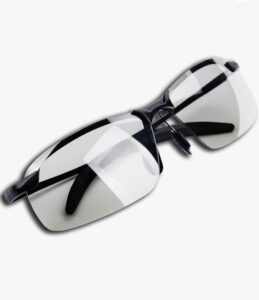
-
Fast photochromic transition
-
Full UV400 and glare protection
-
Comfortable nose pad design
-
Works day and night
-
Lightweight yet durable frame
Cons
-
No inner anti-glare coating
-
Slight yellow tint might not suit all tastes
My Experience with ZENOTTIC Polarized Sunglasses
I have been using the ZENOTTIC polarized sunglasses for a few weeks now. The first thing I noticed is how lightweight and comfortable they feel. The TR90 frame fits perfectly without pinching my head.
The lenses block out harsh UV rays completely. I spend a lot of time outdoors, whether driving or fishing, and these glasses reduce glare noticeably. Colors appear clearer and more natural.
The square frame looks stylish and fits my face shape well. It works great with casual or sporty outfits. The design feels timeless and solid.
I tested them against a blue light tester included in the package. They blocked the light effectively, which was reassuring for eye protection. The cleaning cloth and case are a nice touch, making maintenance easy.
One small downside is the slight yellow tint in the lenses. It’s subtle but visible enough that my wife mentioned I looked a bit jaundiced. It did not bother me, but it might not suit everyone’s taste.
After wearing these glasses during long sessions on my computer and phone, my eyes felt less strained and less red. I forgot to put them on once and immediately noticed my eyes tiring faster.
The glare from some indoor lights can be a bit distracting since the lenses lack an anti-glare coating on the inside. Still, overall clarity remains good.
Pros 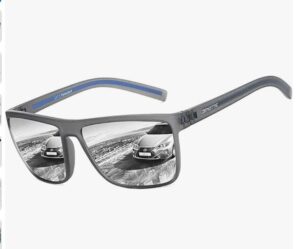
-
Lightweight and durable TR90 frame
-
Full UV400 protection with polarized lenses
-
Stylish square design for men
-
Effective glare reduction outdoors
-
Comes with case, cleaning cloth, and test card
Cons
-
Slight yellow tint on lenses
-
No inner anti-glare coating
My Honest Take on JULI Sports Sunglasses After Real Use
I’ve used the JULI Sports Sunglasses on several trail runs, long drives, and even a few fishing trips. These sunglasses surprised me with how light they feel. I barely noticed them on my face.
The rimless design really gives an open field of vision. There’s no visual distraction from the frame when I look down or to the sides, which is a big plus while cycling and running.
The TR90 frame material flexes well and holds up under pressure. I dropped them once on gravel and saw no damage. That’s rare in lightweight frames at this price.
The HD lenses do a great job at blocking glare and UV rays. On a sunny afternoon, I could look out at the water without squinting. The clarity feels sharp, not tinted or distorted.
I also like the sporty style. They look sleek enough to wear casually, not just during workouts. The fit around the nose and ears feels secure but never pinches.
One thing I noticed though the lenses aren’t polarized. If you’re sensitive to light bouncing off car hoods or water, that might be something to consider. For me, they worked fine in most settings.
They come with a microfiber cleaning cloth and a carrying case, which is a thoughtful touch.
Pros 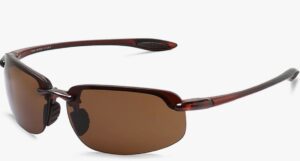
-
Lightweight rimless frame feels comfortable
-
Wide, clear view with no distractions
-
Great UV protection and high-impact resistance
-
Stylish design suits both sports and daily use
-
Sturdy TR90 build that holds shape well
Cons
-
Lenses are not polarized
-
May not fully block reflective glare on water
The answer depends on your riding conditions and needs. Neither is universally better—they serve different purposes. I’ve used both extensively, and here’s what I found.
When Photochromic Lenses Shine
Photochromic lenses automatically adjust their tint based on light. They darken in bright sun and lighten in shade, making them ideal for rides with changing light.
My Experience:
On a long ride that started at dawn and ended in midday sun, my photochromic lenses adapted smoothly. I didn’t need to switch glasses, but they took a few seconds to adjust when moving between shade and sunlight.
Best For:
-
Riders in variable light (e.g., forest trails, sunrise/sunset rides)
-
Cyclists who want one pair for all conditions
-
Those who prefer convenience over instant glare reduction
When Polarized Lenses Excel
Polarized lenses cut glare from reflective surfaces like wet roads or car windows. They improve clarity but don’t adjust to light changes.
My Experience:
On a sunny coastal ride, polarized lenses eliminated blinding glare from the water. However, when I entered a shaded area, the lenses stayed dark, reducing visibility.
Best For:
-
Bright, consistent sunlight
-
Riders dealing with heavy glare (e.g., road cyclists, coastal routes)
-
Those who prioritize crisp vision over adaptability
Key Differences
-
Adaptability: Photochromic adjusts; polarized does not.
-
Glare Control: Polarized is superior for glare; photochromic offers moderate reduction.
-
Versatility: Photochromic works in mixed light; polarized is best for steady brightness.
Which Is Better for You?
-
Choose photochromic if you face changing light.
-
Choose polarized if glare is your main concern.
I keep both types for different rides. Have you tried either? Which works best for you? Let’s discuss in the comments—I’d love to hear your take!
The best choice depends on your riding environment and eye protection needs. I’ve tested both extensively, and here’s what I’ve discovered.
When Anti-Blue Light Lenses Shine
These lenses block harmful blue light emitted from digital screens and artificial lighting while reducing eye strain. They’re particularly useful for urban cyclists or commuters exposed to LED traffic lights and digital displays.
My Experience:
During night rides in the city, my anti-blue light glasses significantly reduced the harsh glare from LED billboards and headlights. However, they didn’t help much with sunlight brightness during daytime rides.
Best For:
-
Urban/night cyclists
-
Riders sensitive to digital eye strain
-
Commuters frequently exposed to artificial lighting
When Photochromic Lenses Excel
Photochromic lenses automatically adjust from clear to dark based on UV exposure, making them ideal for changing light conditions throughout the day.
My Experience:
On a mixed-condition ride (dawn start, sunny midday, evening finish), my photochromic lenses handled every transition smoothly. The only drawback was a slight delay in adjustment when moving between extreme light changes.
Best For:
-
Riders facing variable light conditions
-
Cyclists who want one pair for all daylight hours
-
Those prioritizing convenience over specialized protection
Key Differences
-
Primary Function: Anti-blue light protects against artificial light; photochromic adjusts to natural light
-
Performance Time: Anti-blue light works best at night; photochromic excels in daylight
-
Eye Protection: Anti-blue light reduces digital strain; photochromic protects against UV
Which Should You Choose?
-
For urban/night riding, choose anti-blue light
-
For daylight/variable conditions, choose photochromic
For maximum versatility, some premium cycling glasses now combine both technologies. Have you tried either type? What’s been your experience? Share your thoughts below—I’m always interested in fellow cyclists’ perspectives!
Frequently Asked Questions
What is the main difference between photochromic and polarized lenses?
Photochromic lenses change tint based on light intensity. They darken in bright sun and stay nearly clear in low light. Polarized lenses cut out glare from flat surfaces like wet roads and car hoods. They stay the same shade all the time.
Do I need sunglasses that do both?
If you ride at different times of day or through mixed terrain, combining both features is ideal. Some premium sunglasses offer both photochromic adjustment and polarization in one lens.
Are photochromic lenses good for early morning rides?
Yes. I use them often during sunrise rides. They stay clear enough for good visibility in low light, then darken as the sun rises.
When are polarized lenses better?
I prefer polarized lenses for road biking in strong daylight. They block glare, reduce eye strain, and help me see details in high-contrast areas.
Do photochromic lenses work behind visors or car windows?
Not always. Some visors or glass can block UV light, which stops photochromic lenses from adjusting. I noticed they stay light while driving but work great in direct sunlight.
Final Thoughts
If your rides include changing light, photochromic lenses give you an adaptive experience. You won’t need to switch glasses or worry about lens color.
But if you ride in bright open spaces or along water, polarized lenses help reduce glare and improve vision.
Personally, I keep both types handy. When I ride early or through variable terrain, I reach for photochromic.
When I expect strong sunlight and long roads, I use polarized. If you’re serious about cycling comfort and eye health, it’s worth having the right lens for the right ride.

